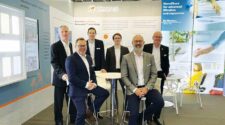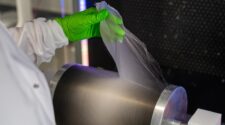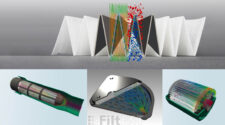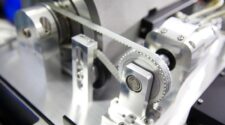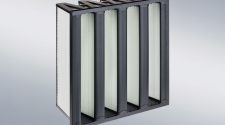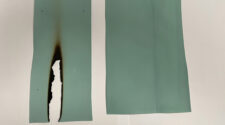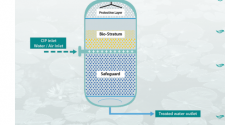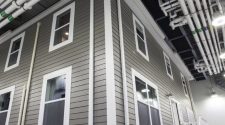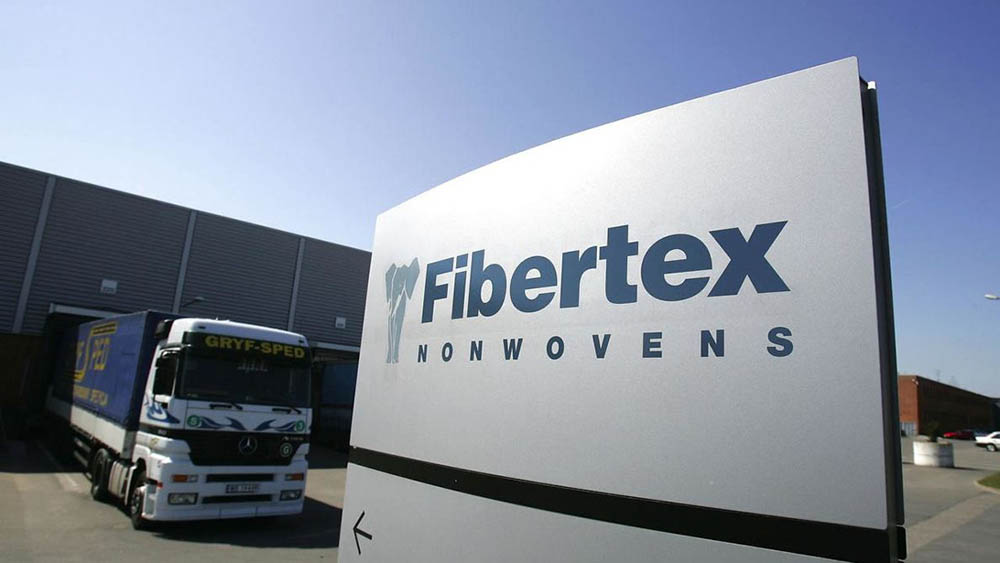
A useful illustration of the still untapped potential of nanofibers in applications such as nonwoven filter media – not to mention other markets for nonwoven such as baby diapers, 1.4 billion of which are consumed every a day – has been made by Brian Haynes, director of global nonwovens research and engineering at Kimberly-Clark.
A sugar cube of polypropylene with sides of 1.58cm weighing 3.5 grams will suffice for the production of 15-micron spunbond fibers that would stretch 14 miles, he has observed, and the same amount of polypropylene employed to make 3 micron meltblown fibers meanwhile, would result in 350 miles of fiber.
That same sugar lump employed to make 300 nanometer nanofibers, however, would result in enough material to stretch 35,000 miles.
The question has always been how to cost effectively produce such fibers on a mass scale.
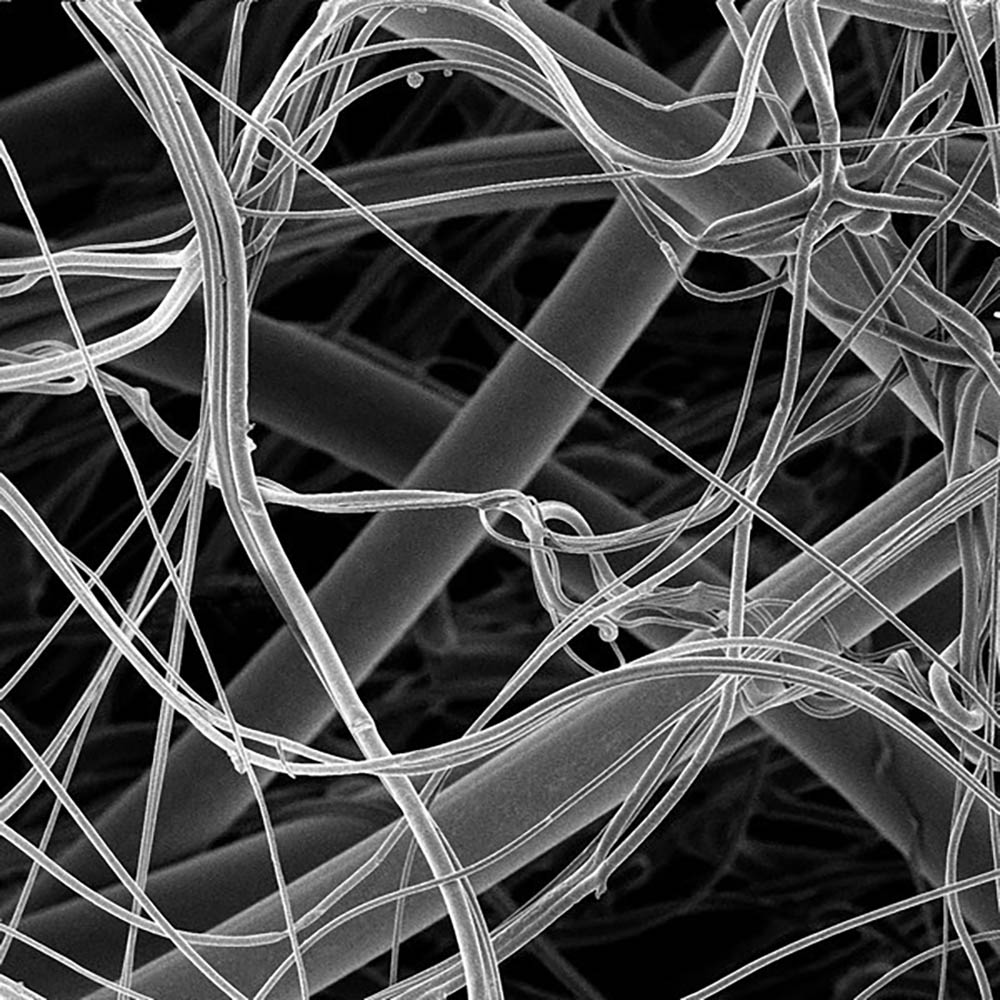
Industrial scale
As such, the announcement by Fibertex Nonwovens, headquartered in Aalborg, Denmark, that it is to begin the industrial scale production of new nanofibers and advanced filtration media, is a welcome sign of progress in this field.
After more than ten years of research and the development of a unique multi-functional production line that is capable of producing a wide range of nano-based nonwoven products, the company says it is now ready to manufacture unique products for the filtration and medical industries.
It has invested in both a new nonwovens production line for filter media and a nanofiber line, to be used in combination with additional value-adding capabilities.
Game changer
“In the late 2000s, we ran a number of research projects in collaboration with leading universities in the field,” said Fibertex Nonwovens CEO Jørgen Bech Madsen. “Nanotechnology was on everybody’s lips back then, but so far only a few industries have managed to develop commercially-sustainable products. Still, we have been firm believers all along that nanotechnology could become a game changer in our industry, and we’re now ready for a big-scale market launch of some quite unique products.
“Over the past year, we have been working to establish a state-of-the-art and highly flexible production line at our facility in Denmark that is capable of manufacturing a wide range of products with various nano-based properties.”
In addition to the new production line, which uses a range of polymers such as PU, PVDF and PA which can be tailored for a wide range of different applications, Fibertex has also invested in new lab facilities, new converting equipment and post-processing lines, including plasma treatment, to give the products quite unique and permanently hydrophobic properties.
Efficiency
The filtration market remains the biggest for nanofiber products and Fibertex reports that its new filtration media offers higher filtration efficiency with less pressure drop than in conventional products, for both liquid and air filtration.
“We see a huge potential in the filtration market, and our ambition is to become a leading global player capable of manufacturing filters with a wide range of different properties,” said Madesen. “In addition, we have the facilities to produce these materials under fully controlled and certified production conditions, ensuring environmentally-responsible and sustainable production. All the equipment installed at the new premises is fully compliant with the highest environmental and safety standards.”
The commercially-available technology for the production of nanofiber-based webs that are reinforced with standard fabrics – primarily nonwovens, for use as filter media but also in applications such as medical materials, battery separators and acoustic insulation – has improved rapidly in the past decade or so.
Gas masks
Electrospun nanofibers were first developed and employed as filters in gas masks by Russia’s military back in the 1930s, while Donaldson in the U.S. has been employing them in many of its commercial filtration products for over 35 years.
Today, hundreds of laboratories worldwide are active in further researching the electrospinning process and developing new nanofiber materials. The end-use applications that have been proposed range from smart implantable devices and highly efficient lighting technology to supercapacitors and hydrogen storage.
The electrospinning process generally involves the formation of the nanofibers from a liquid polymer jet in a longitudinal electric field. The dominant mechanism is the whipping elongation that occurs due to bending instability. Secondary splitting of the liquid polymer streams can also occur, but the final thinning process is elongation.
However, electrospinning – as the first method for the production of such very fine submicron fibers to reach industrial production scale – has a number of limitations. These include the use of often dangerous solvents but also the relatively low productivity of the process, which has prevented many developments from getting beyond the laboratory stage.
These disadvantages have motivated the development of a number of alternatives in recent years.
Nozzleless electrospinning
Some efforts to scale up electrospinning technology have been based on a multiplication of the polymer jets, using multi-nozzle jet constructions as developed by NanoStatics Corp., based in Ohio, and also by South Korea’s Toptec, based on a design developed by Itochu in Japan. The number of jets required to reach an economically acceptable rate of productivity, however, is very high – typically thousands. This results in challenges in respect of process reliability, quality consistency and machine maintenance, not least cleaning.
The advent of so-called nozzle-less electrospinning has emerged as a viable new technology, largely due to its mechanical simplicity.
In this system, a self-organization of the jets occurs, and consequently, the number and spacing of the jets is optimized, even if technology variables such as voltage, viscosity and surface tension of the solution change. This leads to significant improvement in process stability and a consistent quality in the nanofiber layers produced.
In its simplest form, a nozzle-less electrospinning head consists of a rotating drum dipped into a bath of liquid polymer. The thin layer of polymer is carried on the drum surface and exposed to a high voltage electric field. If the voltage exceeds the critical value, a number of electrospinning jets are generated. One of the main advantages is that the number and location of the jets is set up naturally in the highest and most effective number of positions.
Several types of rotating electrodes for free liquid surface electrospinning for industrial machines have now been developed, but the drum type is still one of the most productive.
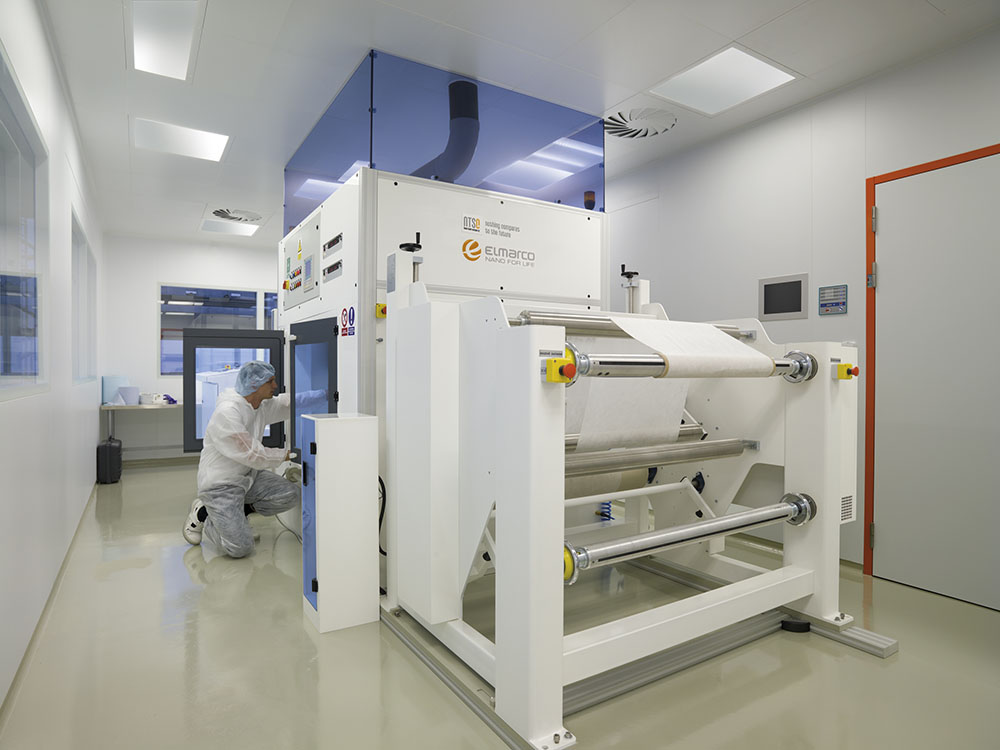
Nanospider
The commercially-available Nanospider systems manufactured by Elmarco in the Czech Republic are now characterized by significant improvements in this nozzle-less technology.
The Elmarco machine employs stationary string electrodes supplied with polymer solution by a proprietary moving “painting” head. This results in a dramatic decrease of solvent evaporation during the process, which has to be removed from the exhaust air released from the machine. The polymer solution concentration is also stable, enabling the system to typically run for more than 24 hours.
Reference
There are now around 180 Elmarco Nanospider nanofiber nonwoven units in commercial operation worldwide and the company, headquartered in Liberec, Czech Republic, has recently released a reference product for air filtration.
The Nanospider is currently suitable for the production of fine filters in grades F7-F9 and E10-E12, with the ability to handle even finer aerosol grades under development.
Nanofibers provide the high specific surface area and a small, interconnected pore structure which allows a very low basis weight coating to achieve high filtration efficiencies while maintaining a low pressure drop.
Here, the most penetrating particle size (MPPS) of the nanofiber media differs to that achieved with microglass and is similar to the performance of HEPA membrane media. This may be due to the diminishing effect of Brownian Diffusion capture of the surface filtration compared to the depth filtration of microglass media.
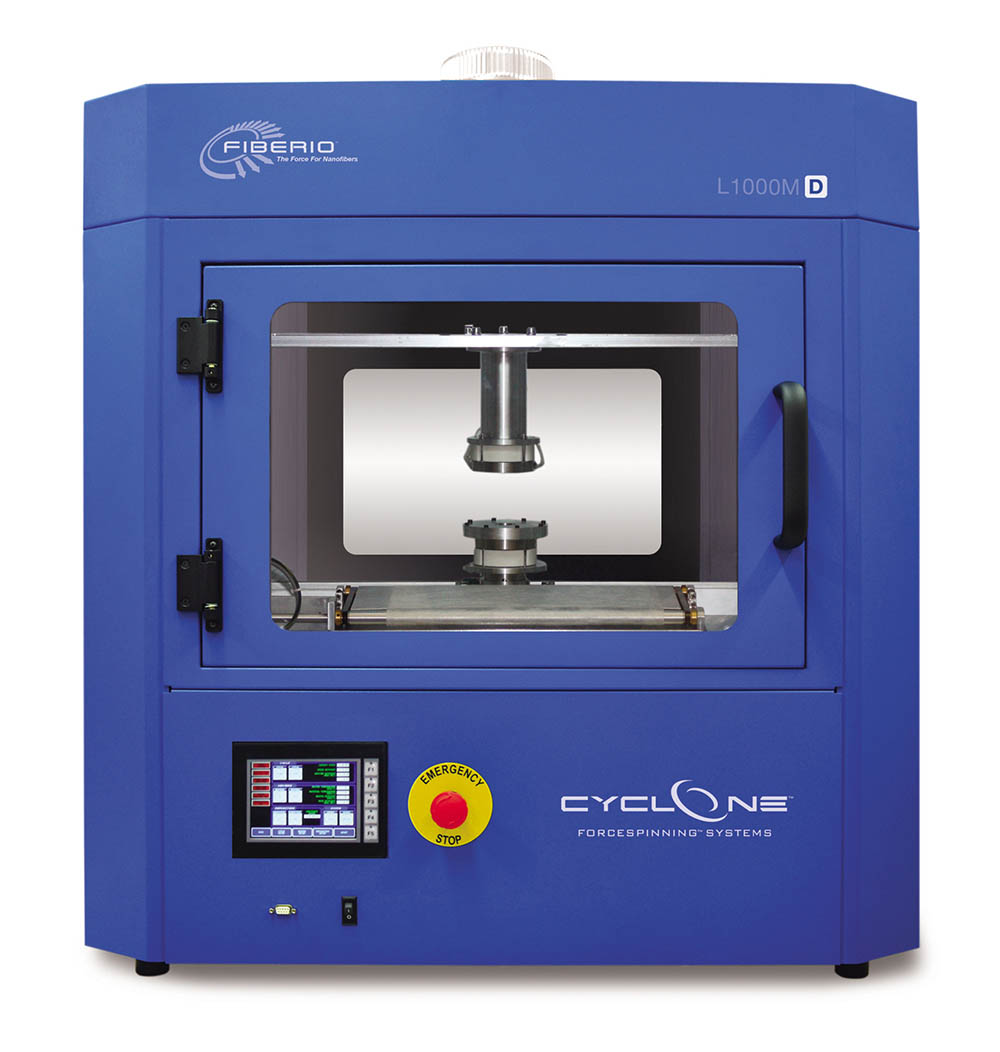
Force spinning
An interesting alternative to electrospinning is the “force spinning” principle developed at the University of Texas Pan American and based on a high-speed rotating spinneret depositing nanofibers on a radial collector. The productivity of this process is of a much higher order than electrospinning.
The mechanical design of the equipment, however, is much more demanding, with parts rotating at tens of thousands of rpm, fed with liquid polymer. Radial deposition of the nanofiber materials produced could also be challenging where continuous roll-to-roll deposition of a thin layer to a supporting substrate is required.
A strong commercial drive was being made by FibeRio of Texas with its Forcespinning systems, up until the company’s acquisition by Clarcor in 2016.
Clarcor itself was acquired by Parker-Hannifin, of Cleveland, Ohio, for $4.3 billion at the start of 2017, creating one of the world’s leading filtration companies with the most comprehensive offering of filtration solutions under a wide range of strong product and service brands.
As a consequence, FibeRio force spinning technology appears to have become very much proprietary to a multi-industry corporation with sales of $14.3 billion in 2018 and an estimated 455,000 customers worldwide.


